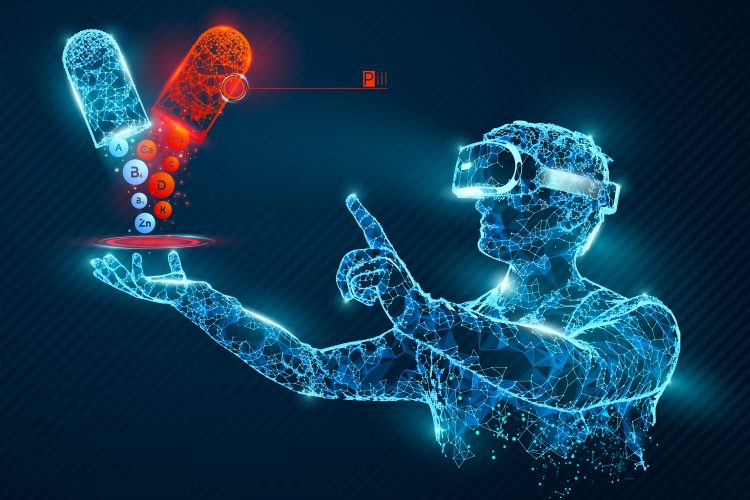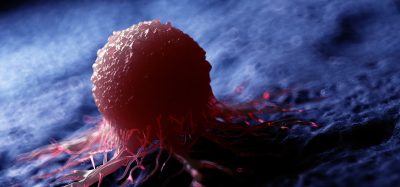Scientists unveil virtual reality tool for COVID-19 drug development
Posted: 13 November 2020 | Hannah Balfour (Drug Target Review) | No comments yet
The tool uses interactive molecular dynamics simulations in virtual reality (iMD-VR) to allow researchers to step inside SARS-CoV-2 enzymes and visualise molecules binding to them.


Scientists have developed an open source framework which enables researchers to visualise and explore the molecular dynamics of SARS-CoV-2 enzymes and drugs in virtual reality (VR). The team said the tool should accelerate the identification of antiviral drug leads for SARS-CoV-2 and also enable teams to collaborate, despite the need for social distancing and remote working.
The team from the University of Bristol, UK, leveraged Narupa to develop inhibitors for the SARS-CoV-2 main protease (Mpro), a promising target for combatting the COVID-19 pandemic caused by the virus. Their work was published in the Journal of Chemical Information and Modeling.
Research has shown that inhibitors for the SARS-CoV-2 Mpro can prevent the virus replicating and therefore could be effective drugs. As a result, investigators across the world are working to find these molecules.
According to the team, a key predictor of an inhibitors effectiveness is how tightly it binds to its target; so being able to visualise how a drug candidate interacts with its target enables researchers to alter its structure to make it bind more tightly. This is exactly what their new virtual framework for interactive ‘molecular dynamics’ simulations allows scientists to do.
Professor Adrian Mulholland from the University of Bristol’s School of Chemistry and the study’s lead author explained: “We have shown that interactive virtual reality can model how viral proteins and inhibitors bind to the enzyme. Researchers can use this tool to help understand how the enzyme works and also to see how potential drugs fit into the enzyme. This should help design and test new potential drug leads. We are sharing these models with the whole community.”
In their study, the Bristol team created a three-dimensional (3D) model structure of the SARS-CoV-2 Mpro and used interactive molecular dynamics simulations in VR (iMD-VR) to ‘step inside’ it and visualise molecules binding to the enzyme, in atomic detail.
![A cartoon showing two orange blob people wearing VR goggles and and using iMD-VR to model how a viral protein binds to the SARS-CoV-2 main protease [Credit: University of Bristol].](https://www.drugtargetreview.com/wp-content/uploads/VR-for-COVID-19-drug-design-312x250.jpg)
![A cartoon showing two orange blob people wearing VR goggles and and using iMD-VR to model how a viral protein binds to the SARS-CoV-2 main protease [Credit: University of Bristol].](https://www.drugtargetreview.com/wp-content/uploads/VR-for-COVID-19-drug-design-312x250.jpg)
A cartoon showing iMD-VR being used to model how a viral protein binds to the SARS-CoV-2 main protease [Credit: University of Bristol].
Professor Mulholland added: “There are currently many efforts globally aimed at identifying drug leads for COVID-19. Our iMD-VR tools will be a valuable resource, enabling virtual collaboration for the international drug discovery community, helping to predict how potential drug leads bind to SARS-CoV-2 targets. An exciting aspect is that it also allows researchers to collaborate in new ways: using cloud computing, they can tackle a drug discovery problem together at the same time when in they are in different locations – potentially even in different countries – working simultaneously in the same virtual molecular environment.”
“Computational modelling of how drugs bind to the SARS-CoV-2 spike protein has been critical in advancing the global fight against the pandemic. Narupa takes that modelling to an entirely new level with molecular dynamics simulations in virtual reality,” said Alison Derbenwick Miller, Vice President, Oracle for Research. “We are delighted that Oracle’s high-performance cloud infrastructure supported the development of this innovative framework and is now helping to advance globally-connected efforts to defeat COVID-19. Growing a connected community of cloud-powered researchers is exactly what Oracle for Research was designed to do.”
Related topics
Bioengineering, Drug Development, Drug Discovery, Drug Targets, Informatics, Lead Generation, Protein, Proteomics, Research & Development, Therapeutics
Related conditions
Coronavirus, Covid-19
Related organisations
Bristol University, Oracle for Research
Related people
Alison Derbenwick Miller, Professor Adrian Mulholland








